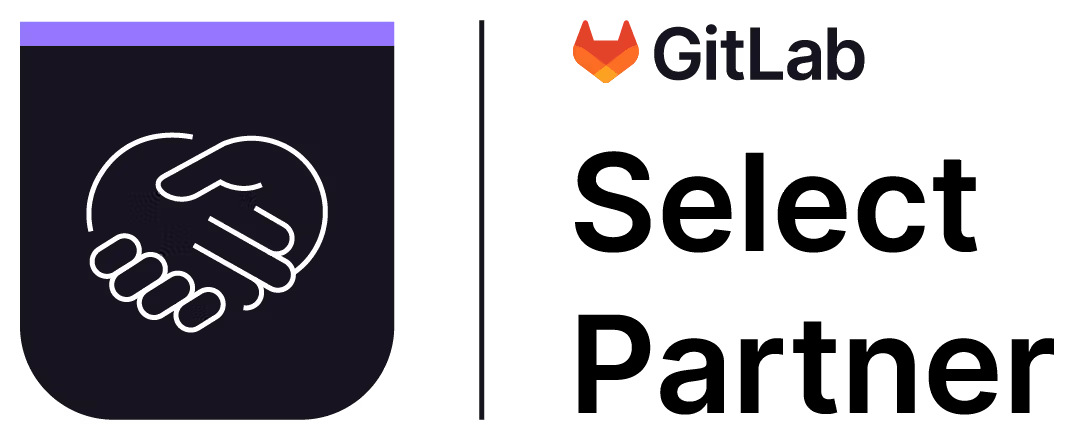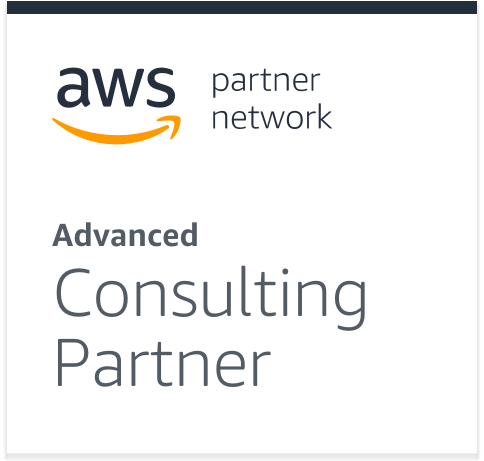Embrace CI/CD for a faster, more effective way to build and deliver software.

With the rapid pace of technological advancement, which demands fast delivery of quality software, continuous integration/continuous delivery (CI/CD) shouldn’t be ignored. It helps you build automation and security into your software, speed up delivery, reduce errors, and provide faster feedback to improve the quality of your products. Here, our experts share everything you need to know to get started.
Get up to speed on CI/CD

Transform your CI/CD pipeline - common pitfalls and how to avoid them
Understand what are CI/CD best practices in relation to people, processes and technology.

The key metrics to banish bottlenecks from your CI/CD pipeline
Establishing and tracking metrics allows you to fix any emerging bottlenecks in your CI/CD pipeline.

The key to CI/CD success? Empower people and improve processes
CI/CD isn’t just about technology – it depends on people to work differently and adopt new processes.
Benefits of CI/CD

Faster releases
CI/CD enables rapid software releases, allowing teams to respond swiftly to market changes and customer needs.

Improved software quality
By automating testing and deployment, CI/CD helps identify and resolve issues early, resulting in higher quality software.

Increased efficiency
CI/CD streamlines the development process, minimising manual tasks and maximising productivity for developers and operations teams.

Enhanced collaboration
CI/CD fosters a collaborative environment, bridging the gap between development and operations teams, and promoting shared ownership of the software lifecycle.

Transparency
CI/CD provides greater visibility into the development process, enabling stakeholders to monitor progress and make informed decisions.

Lower costs
CI/CD provides greater visibility into the development process, enabling stakeholders to monitor progress and make informed decisions.
Get greater insights with CI/CD

DevOps eBook - What does CI/CD success look like?
Understanding what successful CI/CD looks like is key if you want to deliver quality products to customers, maximise value, and remain competitive.

The 6 big blockers to CI/CD adoption and how to overcome them
Explore the most common blockers holding CI/CD back and learn how you can overcome them.

The organisation-wide benefits of standardising your CI/CD tools
Standardising tools across your organisation will ensure your DevOps initiative is a success.
How can Adaptavist help?
Our transformation experts can break down the complexities of advanced CI/CD, with in-depth knowledge of the tools, processes, and cultural change you need to get your organisation where it needs to be. We’ve got experience implementing and managing some of the biggest tools in DevOps, helping hundreds of organisations step up software development.
DevOps Maturity Assessment
We take a deep dive into your DevOps maturity, assessing your people, process, and tools using our expert-developed model.
What you get:
- A top-to-bottom assessment of your people (including team structures), processes, and tools.
- A current state solution architecture, so you can understand where you’re at and where the gaps are.
- Suggested areas for improvement.
- Next steps to help get your teams up to speed, including learning paths for teams.
CI/CD implementation
Our experts help you choose and implement enterprise-ready, scalable DevOps solutions to quickly establish CI/CD pipelines.
What you get:
- Expert consultancy with proven experience in enterprise-wide transformation.
- Advice on which tools will work for your teams.
- A long-term solution roadmap for you to follow.
- Support with integrations and implementation.
- Training to bring your developers up to speed.
- Help with licence purchasing to maximise your budget.
Hear from our experts
Expert-led workshops and webinars, designed to help you unlock the full potential of CI/CD in your software development journey.

Scaling CI/CD in the enterprise
Watch GitLab's Adrian Waters and Adaptavist's Jobin Kuruvilla as they discuss scaling CI/CD for the enterprise.

Virtual CI/CD Workshop with GitLab
Watch our virtual, hands-on workshop now! In this workshop, you will learn how to automate and provide thought leadership within your organisation using GitLab.

The Concepts Behind Successful DevOps
Join Peter Daugavietis as he discusses what makes DevOps successful.
Our DevOps services
From understanding where you're at to making the most of the latest technologies, we offer a wide range of services to meet your business needs and help transform the way you build software.

Strategy & Implementation

Integration solutions

Cloud as a DevOps enabler

Containerisation

ChatOps

DevSecOps

Training

Learn
Tool up for CI/CD success
Choosing the right tool to do the job for your organisation is key – and our experts are here to help. Combining DevOps strategy with the best technology, we take a three-pronged approach to implementing and improving CI/CD, addressing your people, processes, and tools altogether.
Take tools further…

Picking the right CI/CD tool for the job
Learn how to choose the ideal CI/CD tool tailored to your team's needs and project requirements for seamless software delivery.

Which CI/CD tool will work best for you?
Evaluate and select the best CI/CD tool for your DevOps journey with insights from Adaptavist's DevOps experts.

A comprehensive guide to comparing CI/CD tools
Evaluate leading tools on the market - GitLab, Atlassian Bitbucket and Jira, Azure DevOps and GitHub
Our Trusted Partners
With GitLab, you’ve got CI/CD built right in. It automates all the steps you need to build, test, and deploy your code to production. While many CI solutions depend on integrations with your other tools for configuration management, testing, deployment, and security, GitLab is an open-source one-stop shop.
And as a Select GitLab and Professional Services Certified Partner, Adaptavist is perfectly positioned to help you make the most of this powerful tool.

As a leading global Atlassian Platinum Solution Partner, we provide consultancy for Atlassian DevOps tools, including BitBucket and Bamboo – from implementation to the integration of these leading solutions into your DevOps toolchain. Together with Atlassian's software, we offer a suite of specialised apps to make it even easier for your dev teams to follow best practices.

Scaling CI/CD
Why and how to scale your CI/CD

Scaling CI/CD in the enterprise
For DevOps to be successful, organisations need to be able to get products out there securely and repeatedly, a demand that...

The benefits of scaling CI/CD
When you scale CI/CD across your enterprise, you can experience these 14 benefits.

Top three challenges to scaling CI/CD in the enterprise
Find out about the most common challenges and what you need to do to overcome them.

Don't fail to scale – why scaling DevOps for your enterprise is key to driving agility
Scaling DevOps in your enterprise enables you to deliver secure, resilient code repeatedly.

How to optimise your CI/CD pipeline
Eight things you can do right now to optimise your CI/CD pipeline.

Four Ways to Overcome the Challenges of Scaling Your DevOps Transformation
Many organisations successfully launch small DevOps initiatives within targeted teams or business areas b...

Check out our DevOps Decrypted podcast!
DevOps Decrypted focuses on all things Development + Operations, with Adaptavist's expert staff discussing elements of the philosophy that has changed the world of software development.
Our expertise
Leverage Adaptavist's expertise backed by prestigious certifications, including GitLab Professional Services and Atlassian Platinum Solution Partner, to ensure exceptional DevOps services and solutions tailored to your needs.




Frequently asked questions
What is continuous integration (CI)?
CI refers to the practice of continuously publishing code changes and new code to a shared branch. Code changes initiate automated test-and-build sequences so the new code can be updated in real-time in relation to the rest of the software.
What is continuous delivery (CD)?
CD refers to the discipline of building software that can be deployed to production at any time, automation means engineers don’t need to perform every step manually, so the process is faster and much more stable.
What is CI/CD pipeline?
In a CI/CD pipeline, all developers merge their code changes in a central repository on a regular basis. Each code change initiates automated build-and-test sequences, providing feedback to the developers so they can fix any issues, deployment, and continuous monitoring to proactively identify problem areas.
What is CI/CD's role within DevOps?
DevOps incorporates how teams utilise people, processes, and technologies to deliver value to customers, but it isn’t just about getting deliverables released. For DevOps to be successful, teams need to ensure they’re delivering value quickly, securely, and repeatedly.
CI/CD helps teams to focus on making rapid improvements to the customer experience. It builds automation, governance, longevity, and security into software development. It speeds up the life cycle by combining build, configure, test, and deployment functions into product-oriented teams.
Why do CI/CD?
Practising CI/CD enables your organisation to keep up with the fast-paced global economy by bringing new features and code changes to your customers more quickly and efficiently. It sets your software apart from competitors’, giving you an advantage in a crowded marketplace. And it makes it easier to keep evolving, improving the quality of your software for your customers.
With automated pipelines taking care of the heavy lifting, your teams will also benefit from increased efficiency and be able to channel their skills into improving testing, creating resilient code, and innovating for your end users.
What are the fundamentals of CI/CD?
Source: a change in code in the repository (or automatic scheduling) triggers a notification to run automations in the pipeline.
Build: the source code is combined to build an artifact, a usable instance of the product, flagging any potential problems.
Test: automated tests are run to validate the code and how the product behaves. These tests might be run in multiple stages, and provide feedback to the developers.
Deploy: when code has passed the tests, it’s ready to be deployed into a new environment, either manually into a staging environment first or automatically into a production environment for the customers.
Monitor: once the artifact is deployed into production, the application is continuously monitored to analyse trends, examine the performance, and proactively identify problem areas.
Any failures will trigger notifications to let the relevant developer know the cause, and when code is successfully deployed to production, the whole team is made aware too.
What are the benefits of CI/CD?
The benefits of CI/CD include shorter review time and faster time to market, faster bug fixes and better code quality, and a more efficient infrastructure, supported by faster feedback loops and more effective collaboration and communication. You’ll also be able to measure your progress, improving your processes as you go.
What are CI/CD best practices?
People, processes, and tools all have a big role to play in CI/CD’s success. You need people who are happy to move away from traditional software development models, focusing on making ongoing improvements and responding to customers’ demands. You need processes that work with your people rather than against them, so that integration becomes a non-event and new features can be rolled out as soon as they’re ready. And you need tools that meet your requirements and your size, whether you’re still dependent on monolithic applications or your environment is based on a microservices architecture.
Ready to get started? Let’s talk
Supercharge your DevOps journey: Complete the form below to connect with our experts and explore how Adaptavist's tailored solutions can transform your CI/CD processes.